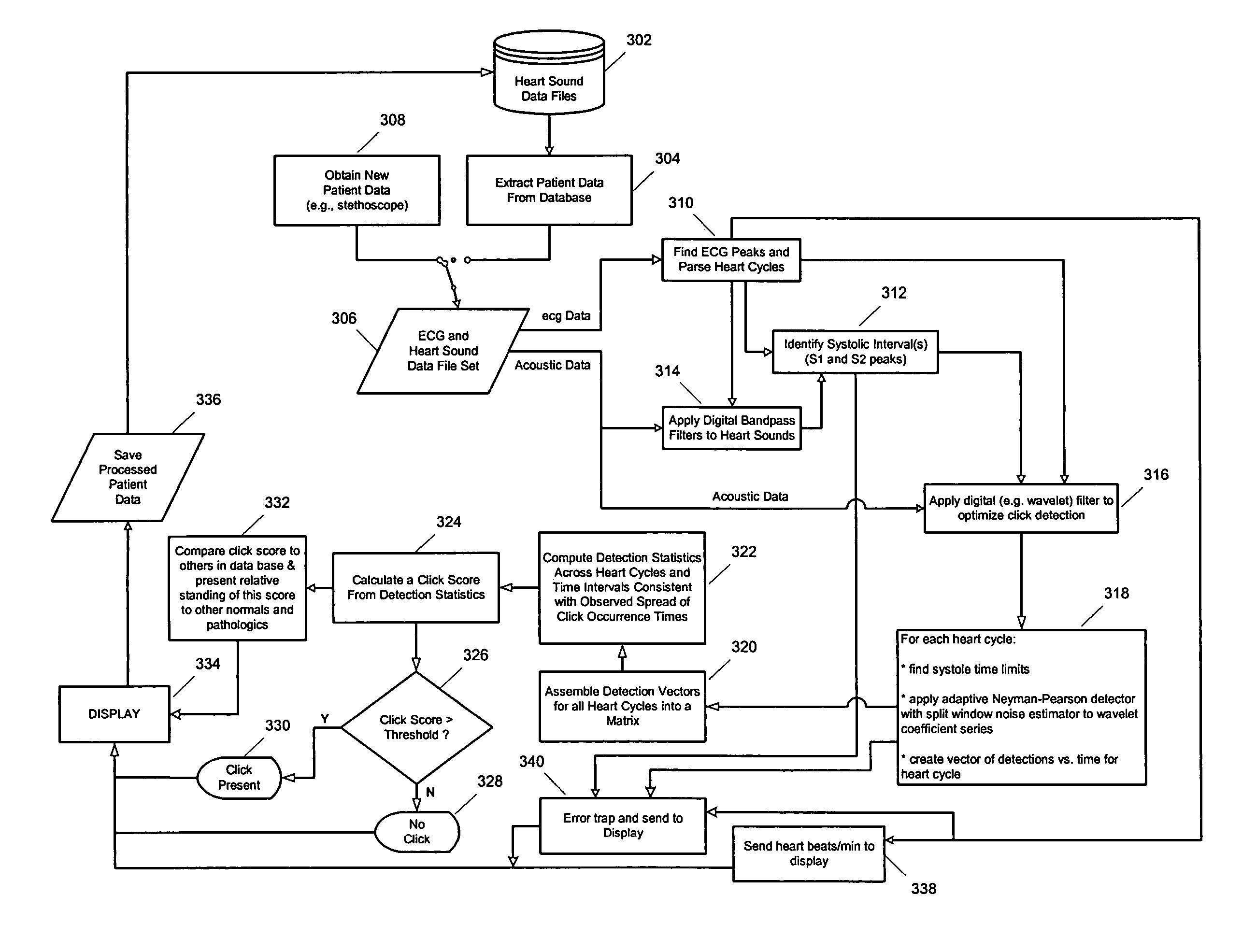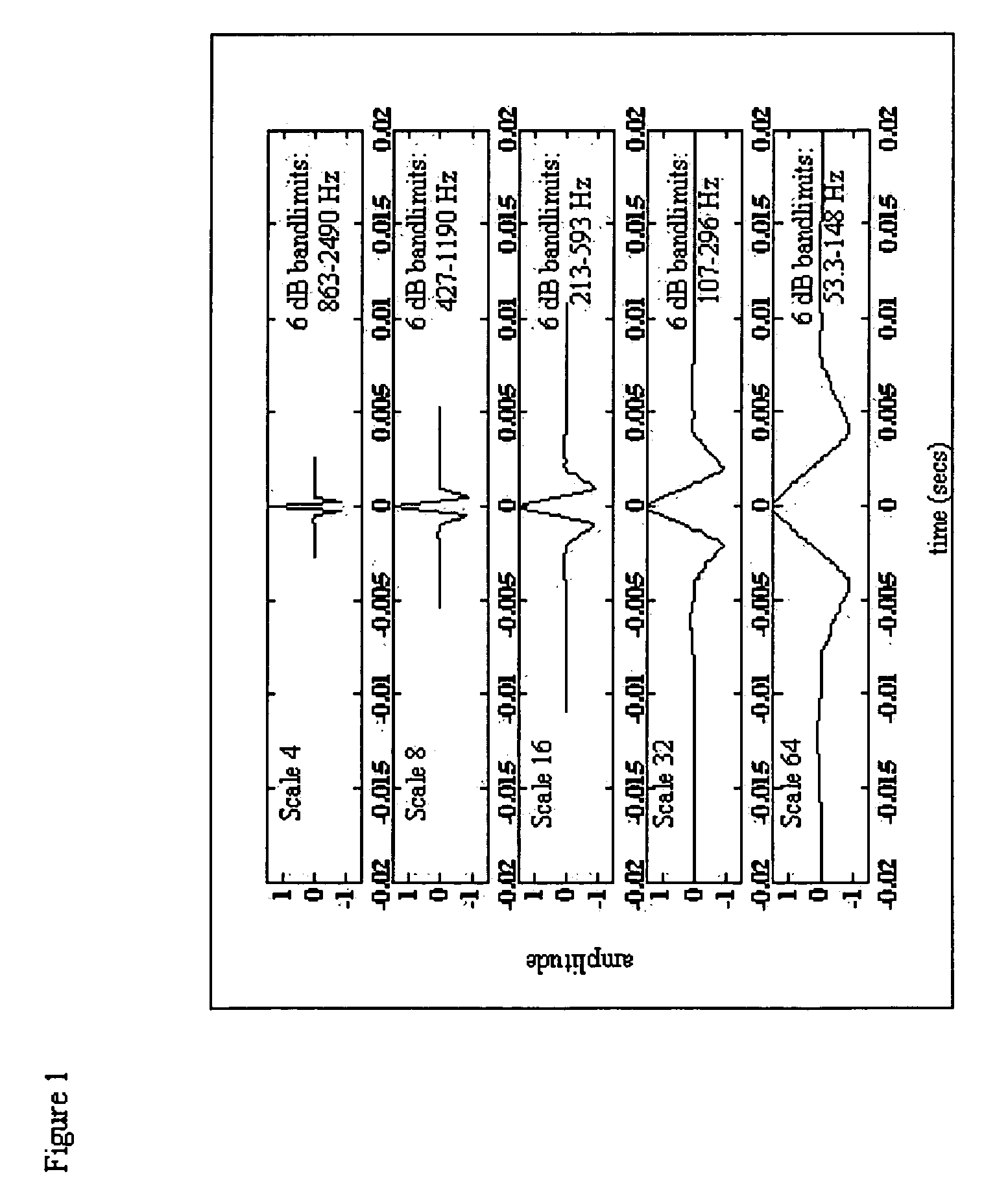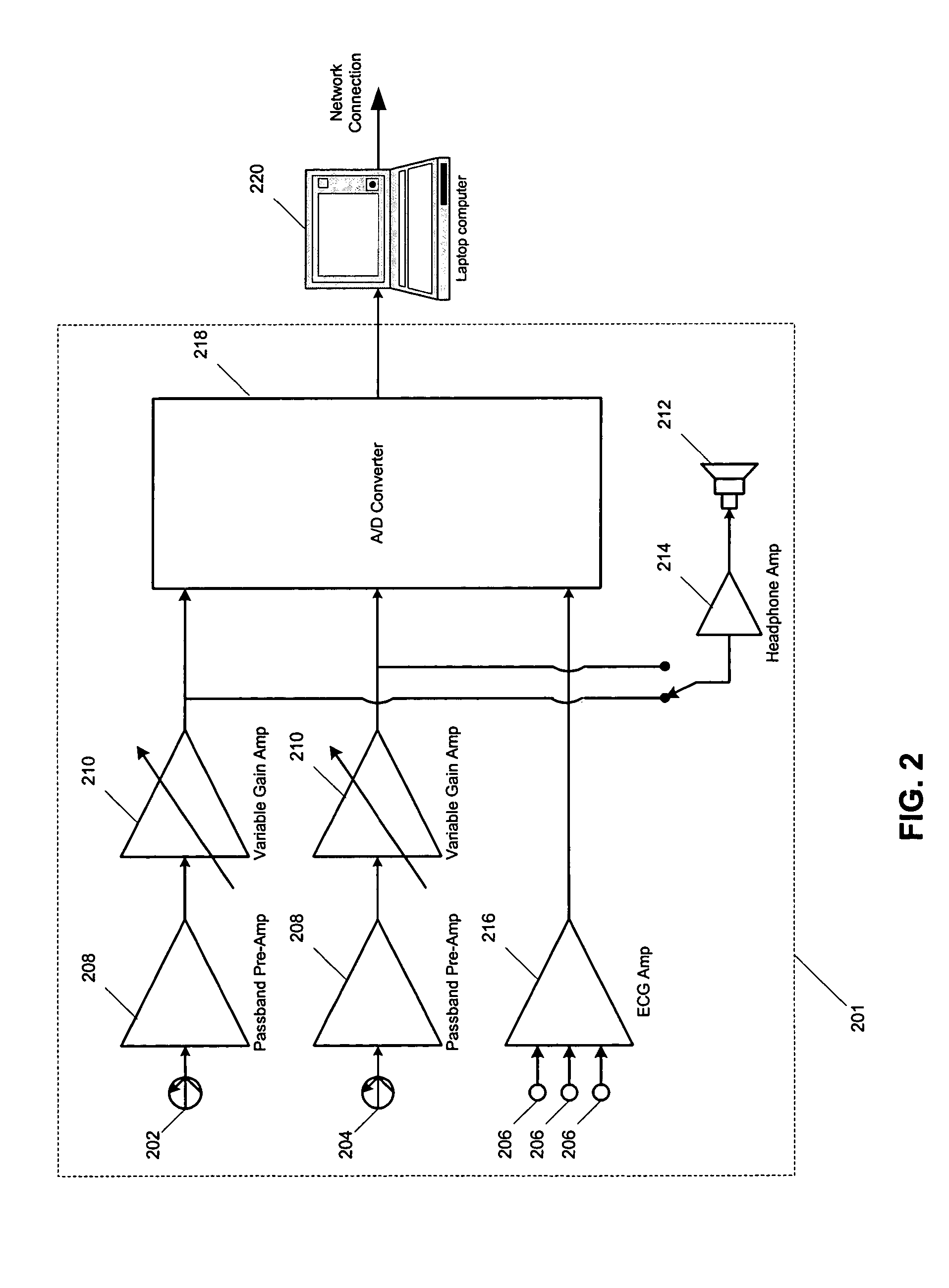System and method for diagnosing pathologic heart conditions
a heart disease and system technology, applied in the field of system and method for diagnosing heart disease, can solve the problem that no device is currently available to fulfill this function
- Summary
- Abstract
- Description
- Claims
- Application Information
AI Technical Summary
Benefits of technology
Problems solved by technology
Method used
Image
Examples
Embodiment Construction
[0014]Before describing the present invention it is helpful to have a basis for the detection of pathological heart conditions. Analysis of a variety of heart sounds and corresponding diagnoses from the Johns Hopkins School of Medicine (JHU / SOM) has shown that time-frequency analysis is a versatile technique for detecting and classifying pathologic heart conditions. Of the available time-frequency techniques, wavelets are a useful method for representing heart sound frequency dynamics without creating cross term artifacts. Wavelet transforms can be computed for a continuous or discrete set of transform variables, depending on the priority for compactness (e.g., data compression applications) or ease of visual interpretation (e.g., pattern recognition applications), respectively. While compressibility is of interest for future applications, the relative ease of interpretation provided by continuous wavelet transforms (CWTs) suggested their use with the present invention. While wavele...
PUM
 Login to View More
Login to View More Abstract
Description
Claims
Application Information
 Login to View More
Login to View More - R&D
- Intellectual Property
- Life Sciences
- Materials
- Tech Scout
- Unparalleled Data Quality
- Higher Quality Content
- 60% Fewer Hallucinations
Browse by: Latest US Patents, China's latest patents, Technical Efficacy Thesaurus, Application Domain, Technology Topic, Popular Technical Reports.
© 2025 PatSnap. All rights reserved.Legal|Privacy policy|Modern Slavery Act Transparency Statement|Sitemap|About US| Contact US: help@patsnap.com



